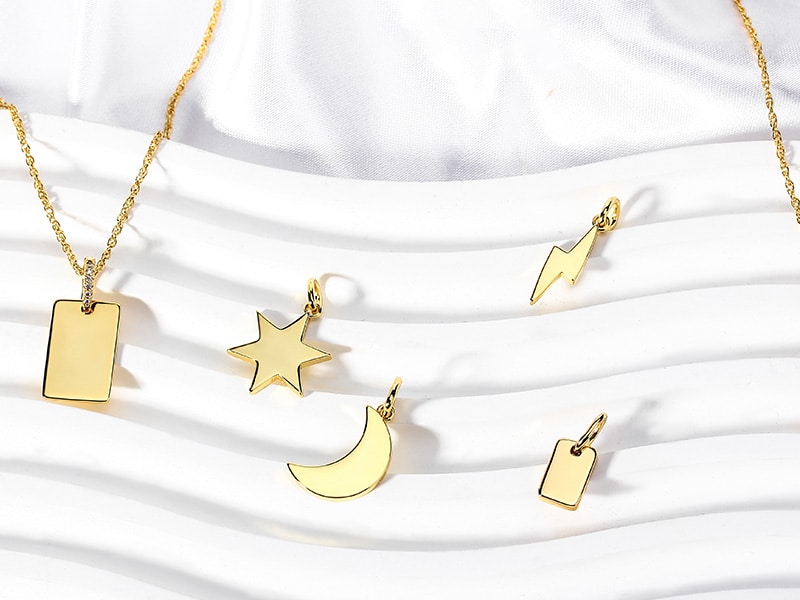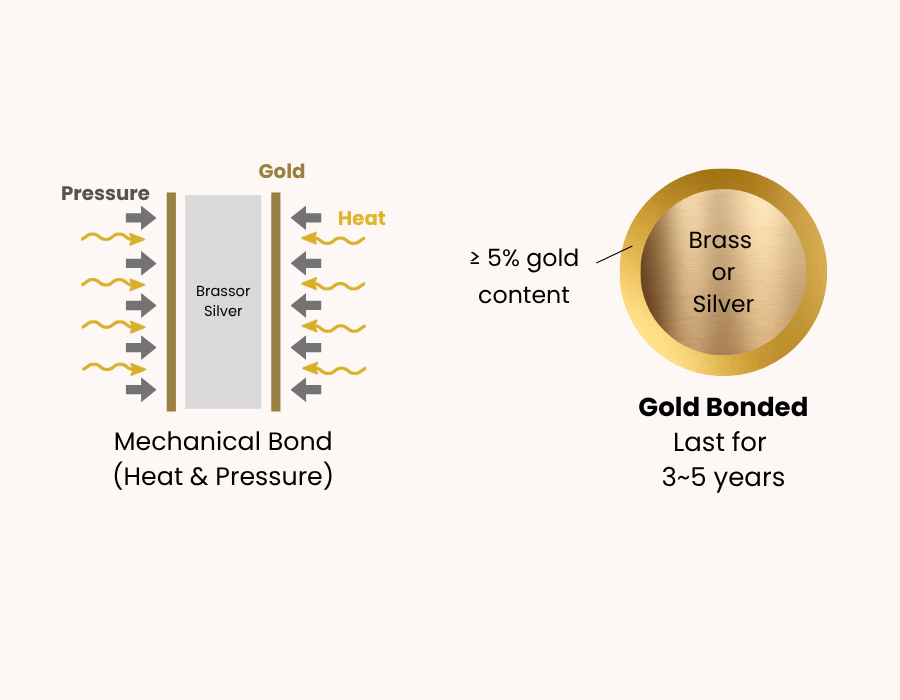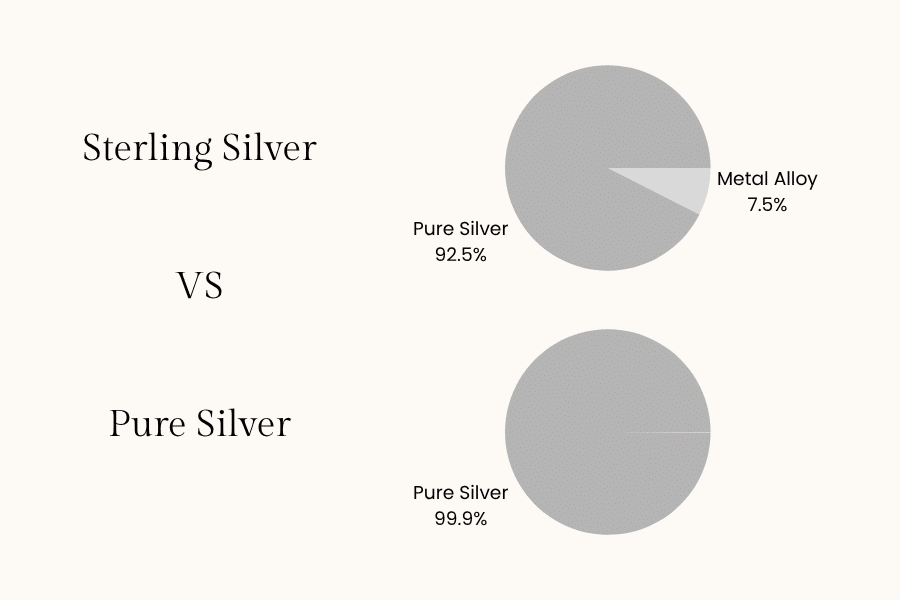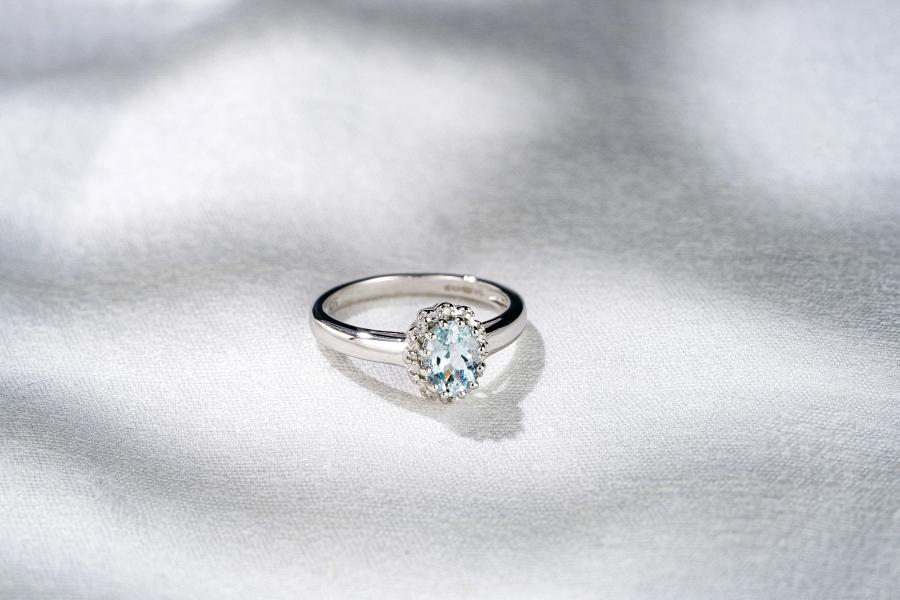Gold-filled jewelry has gained popularity in the jewelry industry as a cost-effective and ideal alternative to solid gold. This is because it has close resemblance to solid gold jewelry and offers superior longevity at a cheaper price.
There are two major ways of making gold-filled jewelry – mechanical bonding and chemical bonding. In this article, we will explore each of these methods, giving a detailed comparison of mechanical bond vs chemical bond to help you make an informed decision on which is better for your needs.
What is Gold-Filled Jewelry?
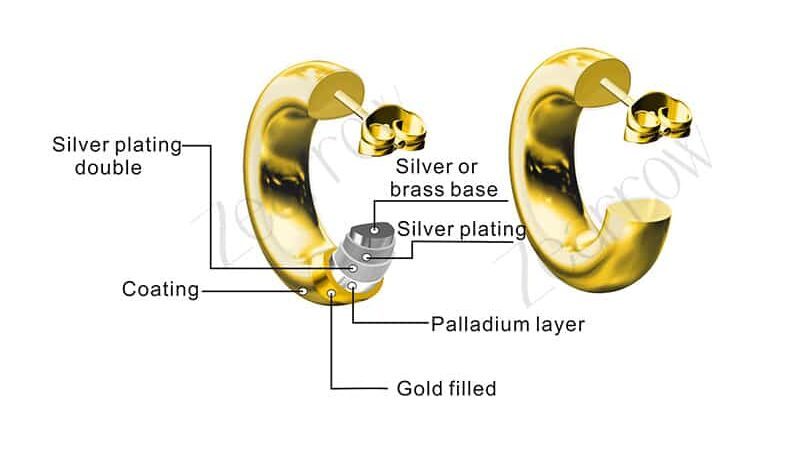
Gold-filled jewelry is an affordable, durable alternative to solid gold. It’s made by layering a thick layer of gold on a brass or silver base metal.
NOTE: The thick layer of a custom gold filled jewelry must be up to 5% or 1/20 of the jewelry total weight.
What is a Mechanical Bond?
This is a gold filled process that involves manually attaching the layer of gold to the base metal with hands, and then applying heat and pressure to make sure the gold layer sticks. This method does not involve any chemical reaction.
Mechanical Bonding Process
- Cleaning and Surface Treatment: Firstly, the base metal must be thoroughly cleaned to remove particles, oils, and oxides that can hinder the adhesion of the gold.
- Layering the Gold and Base Metal: A thick sheet of gold (at least 5% of the jewelry weight) is gently layered over the base metal.
- Applying Heat and Pressure: The fused gold and metal are passed through a high heat and pressure process to get a tight adhesion.
- Annealing: The bonded piece is then annealed to relieve internal stresses, thereby enhancing ductility for accurate shaping.
- Shaping and Forming: Finally, the piece is cut, stamped, or drawn into jewelry components, while making sure the gold layer remains intact.

What is a Chemical Bond?
A chemical bond refers to the process of creating a molecular-level bond between the gold layer and base metal through electrochemical reactions, such as electroplating. Basically, the base metal is submerged in a gold ion solution, and an electric current is applied to make the gold stick firmly to the base metal.
Chemical Bonding Process
- Cleaning and Surface Treatment: Begins with cleaning the base metal thoroughly to remove any particle or oil that will make the gold-filled jewelry look uneven and smudged.
- Pre-Treatment (Activation): The base metal surface is treated with electrolytes to “activate” it, in order to get a strong gold ion adhesion.
- Electroplating Process: The base metal is inserted fully into a gold-ion solution, and an electric current is applied to the solution, making the gold ions stick tightly to the metal.
- Drying and Inspection: The bonded piece is dried and inspected to ensure there’s no flaw.
Pros and Cons of Mechanical Bond
Pros
- Produces durable jewelry with long-term stability.
- The process is streamlined, with a quick setup.
- Lower material and labor costs compared to chemical bonding.
Cons
- Potential wear over time, if not properly maintained.
- Layering and pressing may cause visible seams and uneven edges.
Pros and Cons of Chemical Bond
Pros
- Produces a stronger and more permanent bond.
- Offers better resistance to oxidation and corrosion.
- Suitable for mass production.
- Precise and smooth finishes, even for intricate parts.
Cons
- More expensive due to the extensive process.
- Requires precise control and expertise during.
When to Choose Mechanical Bonding
Choose mechanical bonding if your brand:
- Specializes in affordable, durable jewelry lines, where longevity matters more than intricate detailing.
- Is a cost-conscious or everyday wear startup targeting cost-sensitive markets.
When to Choose Chemical Bonding
Choose chemical bonding if your brand:
- Specializes in luxury or intricate designs, and has a larger budget.
- Prioritizes quality and premium positioning in fine jewelry.
FAQs
Is Gold Filled Jewelry Real?
Wondering “is gold filled jewelry real?” Given the amount of gold content in the jewelry composition, it’s considered real gold even though it’s not like solid gold that’s 100% gold.
Is Gold Filled Jewelry Valuable?
Yes, gold filled jewelry is valuable, especially when you compare it to other gold alloys like gold plating and gold vermeil.
How to Polish Gold Filled Jewelry?
Start by cleaning the jewelry with a soft cloth. Then, rub it in a circular motion using a non-abrasive gold polish. Store in an anti-tarnish pouch to maintain its shine.
How Long Does Gold Filled Jewelry Last?
Wondering “how long does gold filled jewelry last?” When made by a professional jewelry manufacturer, your gold filled jewelry can last for 3 to 5 years, or even longer if properly maintained.
Conclusion
After exploring how is gold filled jewelry made and comparing the two methods – mechanical bond vs chemical bond, we’ve deduced that mechanical bonding is most ideal for brands with limited capital and target cost-sensitive markets. Chemical bonding, on the other hand, is best for brands with bigger budgets and specializes in luxury or intricate jewelry designs.
Above all, it’s crucial that you partner with a professional custom jewelry manufacturer to bring your vision to life and promote your brand with quality gold-filled jewelry.
